I’m British-Canadian, so quite partial to a good cuppa. And for it to be a good cuppa, it needs to be plastic-free. That means plastic-free packaging and plastic-free tea. Here’s why I recommend loose leaf tea instead of tea bags.
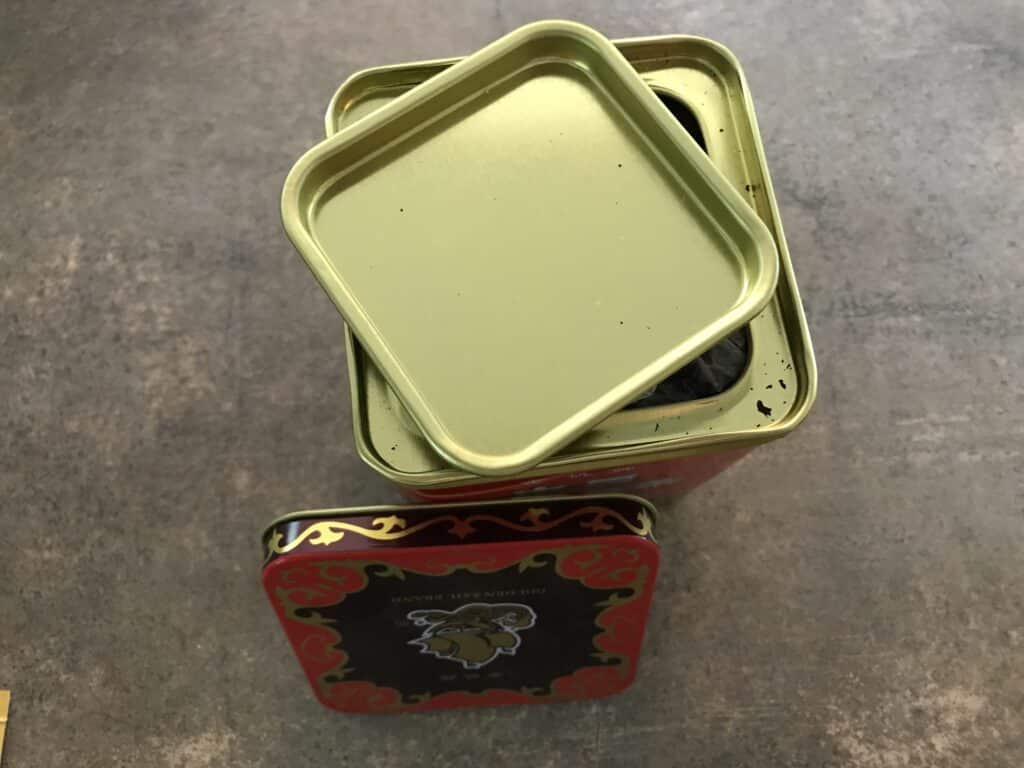
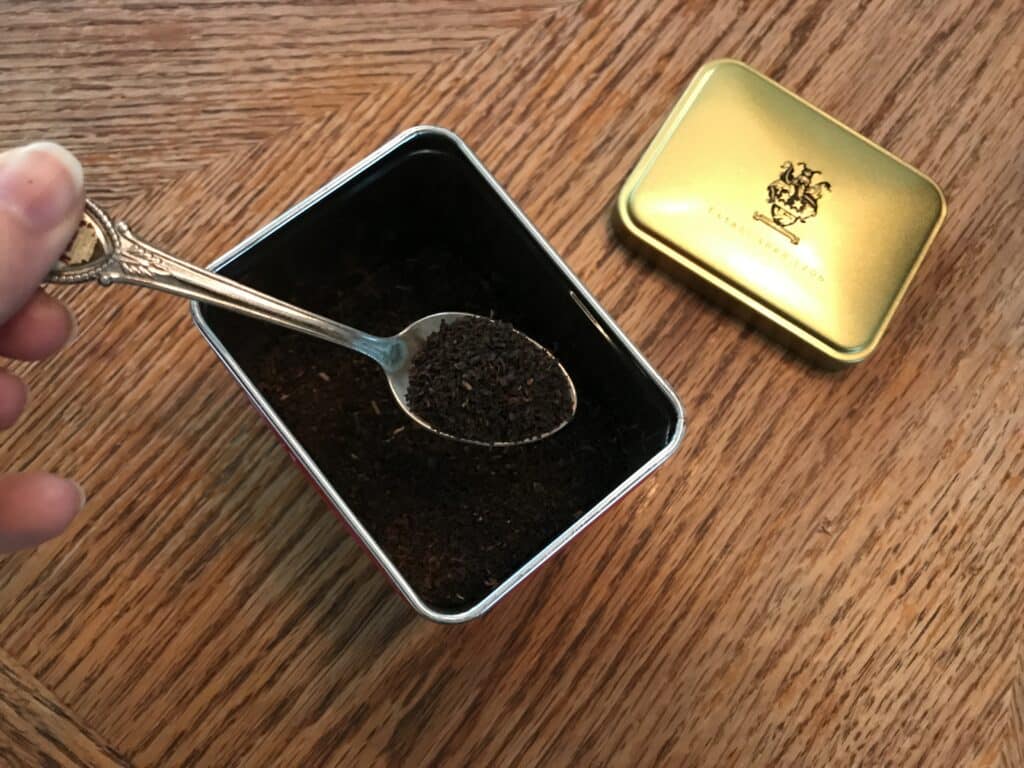
While a good cup of tea solves almost everything, tea bags can also cause their own set of problems. After centuries of tea drinking, many manufacturers began making tea bags using plastic. The result is a questionable brew of tea teeming with microplastics and phthalates.
The inspiration for this post came courtesy of a reader question:
Have you researched the issue of microplastics with the teas with tea bags that you recommended?
Jessie Nichols
Yes, Jessie, I did research it and included a little about plastics and epichlorohydrin in the original post about our favorite teas. Your question prompted me to double-down, though, and get into the weeds about tea bags, plastic pollution, phthalates, and why I recommend loose leaf tea.
The invention of the tea bag dates back to the early 1900s.
Legend has it that an American tea trader called Thomas Sullivan sent samples of tea in silk bags, which recipients mistakenly put in boiling water to steep. Voila! The tea bag came into being.
Nowadays, almost every cup of tea is brewed from a tea bag.
Do tea bags contain plastics?
Yes!
Plastic tea bags became commonplace many years ago as companies looked for ways to cut costs and prevent tea bags popping open.
Plastic tea bags typically comprise nylon or polyethylene. You’ll often also find plastic in tea bags mostly made with paper or other plant-based materials. This is because manufacturers use plastic to seal the tea bag at the top.
Plastic may also be present as a thin laminate on tea bag labels, which helps prevent the label dissolving in hot water.
All of this ‘hidden’ plastic makes it tricky to know if a tea bag is truly compostable.
Common tea bag types
There are three main types of tea bags. Familiarity with these can help you identify when plastic is likely to be present.
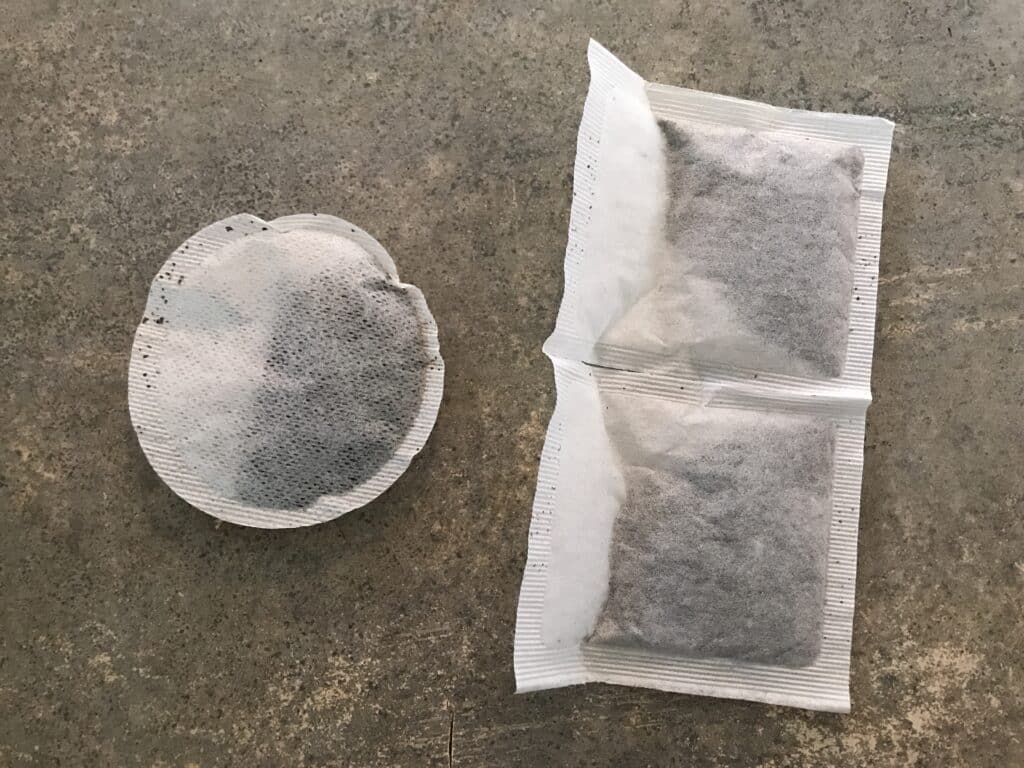
Round or square teabags
These bags have crimped edges and are usually made with paper and plastic woven blends. Manufacturers use glue to seal the bags, which typically contain 20-30 percent plastic.
String tea bags with tags
These bags are folded and stitched or stapled. They tend to be made of polypropylene or other plastic, to help the bags retain their shape in water.
Pyramid tea bags
Luxury tea bags designed for greater infusion, these are usually made with silky feeling nylon or polypropylene, meaning they’re usually 100 percent plastic.
Some tea bags are made with a chemical called epichlorohydrin. This is an epoxide resin that helps make tea bags stronger. Unfortunately, it’s also a known human carcinogen, although the US still considers it food-safe.
It’s just a tea bag – why does it matter?
Even if you don’t drink as much tea as I do, every cup counts.
Globally, millions of cups of tea are brewed every day. A large number of those cuppas come from tea bags made with plastic. Most are tossed in the trash, and the few that are put in compost may pollute the compost stream with plastic.
These plastic bags or bags with plastic components, leach microplastics and phthalates into your tea, which can harm your health. They also cause microplastic pollution that can harm wildlife and the wider environment.
Research into plastic and phthalates in tea bags
Research from 2019 showed that a single plastic tea bag could release 11.6 billion microplastic filaments and 3.1 billion nanoplastics into a single cup of tea. More nylon and polyethylene terephthalate (PET) particles were released from the tea bags in this study than from any other reported food source.
Toxicity assessments in animals suggest dose-dependent behavioral and developmental effects at doses common when brewing tea.
Subsequent studies have found similarly worrying results. Specifically, research from 2023 looked at microplastic and phthalate emissions from 45 tea bag samples:
| Persian tea brands | German tea brands | |
|---|---|---|
| Microplastic filaments per bag | 412.32 | 147.28 |
| Phthalates per bag | 2.87 mg/g | 2.37 mg/g |
Most MPs were 100-250 μm in size. The most common phthalates were:
- Diethylhexyl phthalate (DEHP)
- Diisobutyl phthalate (DiBP).
The researchers noted an elevated cancer risk from exposure to DEHP. They also considered likely microplastics exposure for adults and children drinking tea from tea bags. The results suggested the following:
| Adults | Children | |
|---|---|---|
| Tea consumed daily | 250 mL | 150 mL |
| Microplastic consumption | 810 | 486 |
There are clear health benefits to ditching plastic tea bags. There are also environmental benefits, including:
- Less plastic and microplastic pollution and waste
- Reduced carbon footprint (especially with loose leaf tea)
- Less soil and water contamination
- Faster, more complete, decomposition for bio-based bags.
What are plastic-free tea bags made of?
Plastic-free tea bags usually comprise bioplastics made from maize or corn starch, rather than petroleum. This is typically in the form of polylactic acid (PLA), which functions in much the same way as polypropylene.
Organic tea bags may also contain PLA but this cannot be from genetically modified maize.
Some tea bags use a little PLA to seal the bag but are otherwise mostly made of wood pulp or abaca, which is extracted from banana leaves. Abaca is also known as Manila hemp (it’s not hemp hemp) and is very strong. It’s even used to make bags, carpets, and bank notes!
For greater flexibility, consider buying loose leaf tea and organic cotton reusable tea bags (View on Amazon). Non-toxic and eco-friendly, you get the best of both worlds, with convenient bags for when you need them and loose leaf tea when you have the time and inclination for a more involved brewing process.
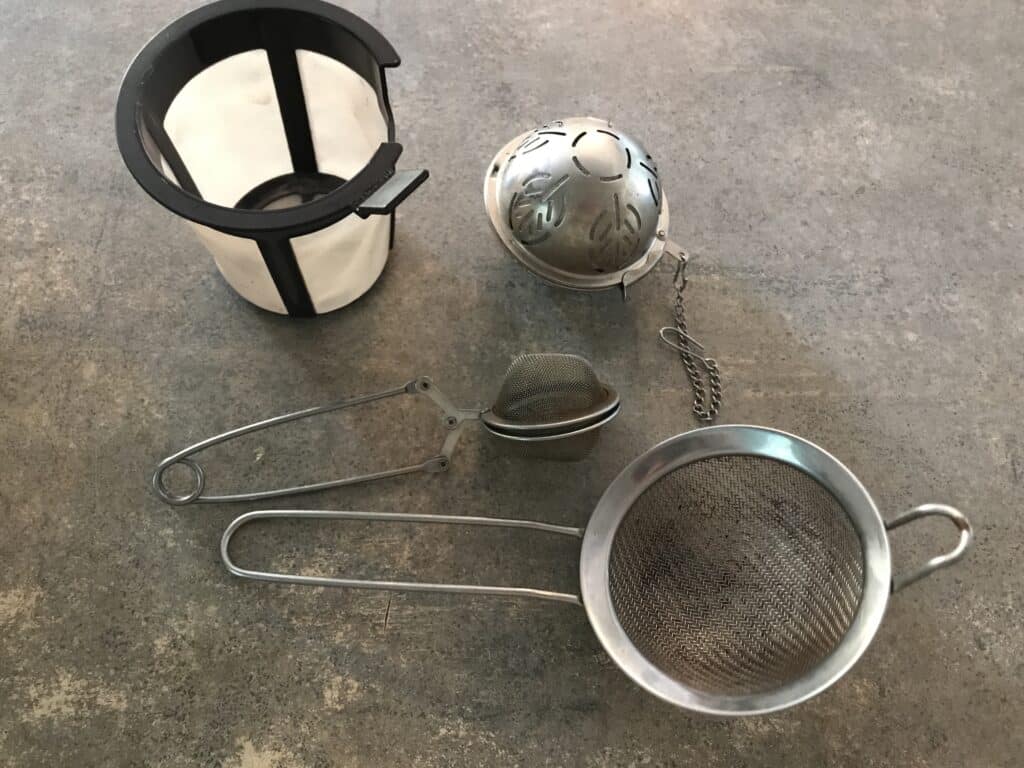
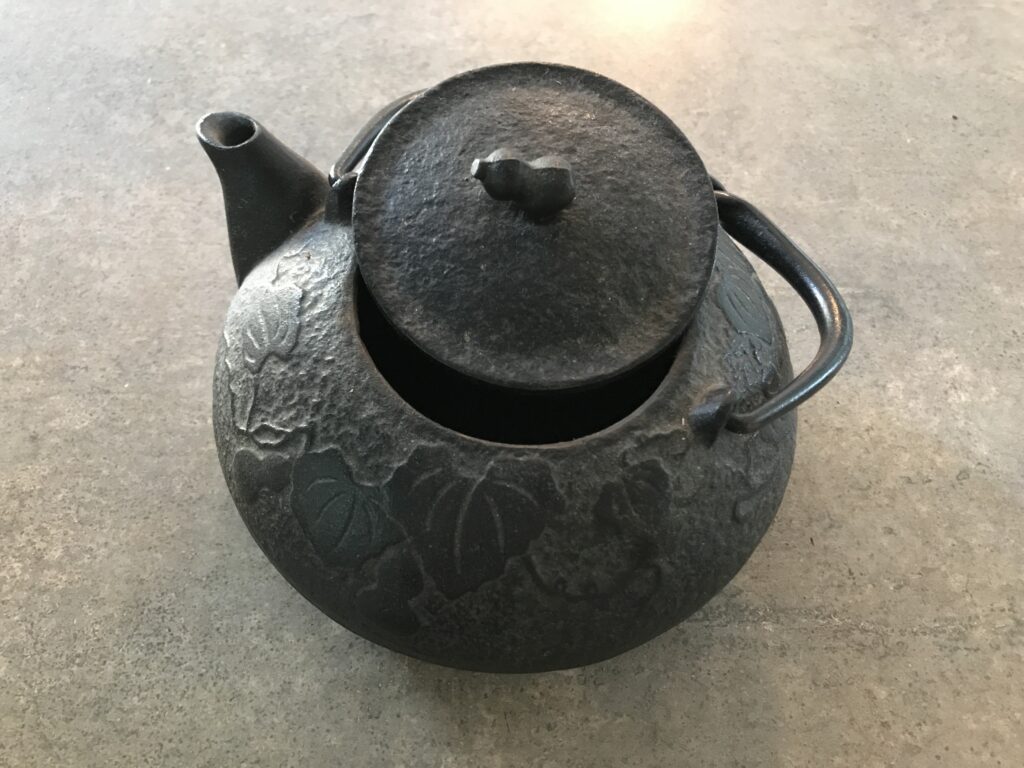
Are PLA tea bags really better than plastic?
PLA or polylactic acid isn’t made from fossil fuels, so it doesn’t carry the burden of pollution associated with the extraction of oil. PLA also biodegrades, breaking down into safe, natural chemicals under industrial composting conditions.
The trouble is, PLA doesn’t break down in home compost, or without the heat and air circulation of large scale composting facilities. That means it is a bit of a misnomer to call PLA biodegradable.
You definitely don’t want to just toss a tea bag in your garden (or the trash) and assume nature will handle it within your lifetime.
PLA tea bags are better than petroleum-based plastics, but you still need to put them in municipal compost collections to follow through on their eco-friendliness. If you don’t have garden waste or food waste collection where you live, you can cut open the tea bags and empty the tea leaves into your home compost, then put the bag itself in the trash. This is still better than a plastic tea bag, but only marginally. The best option is loose leaf tea.
Plastic wrappers for tea bags
Most herbal tea bags not only contain plastic in the bags themselves but are individually wrapped in plastic and foil sachets that are hard to recycle. Some black tea also comes in individual wrappers.
Given that loose leaf tea does just fine without wrappers, it’s easy to assume that tea bag wrappers are redundant and an unnecessary waste.
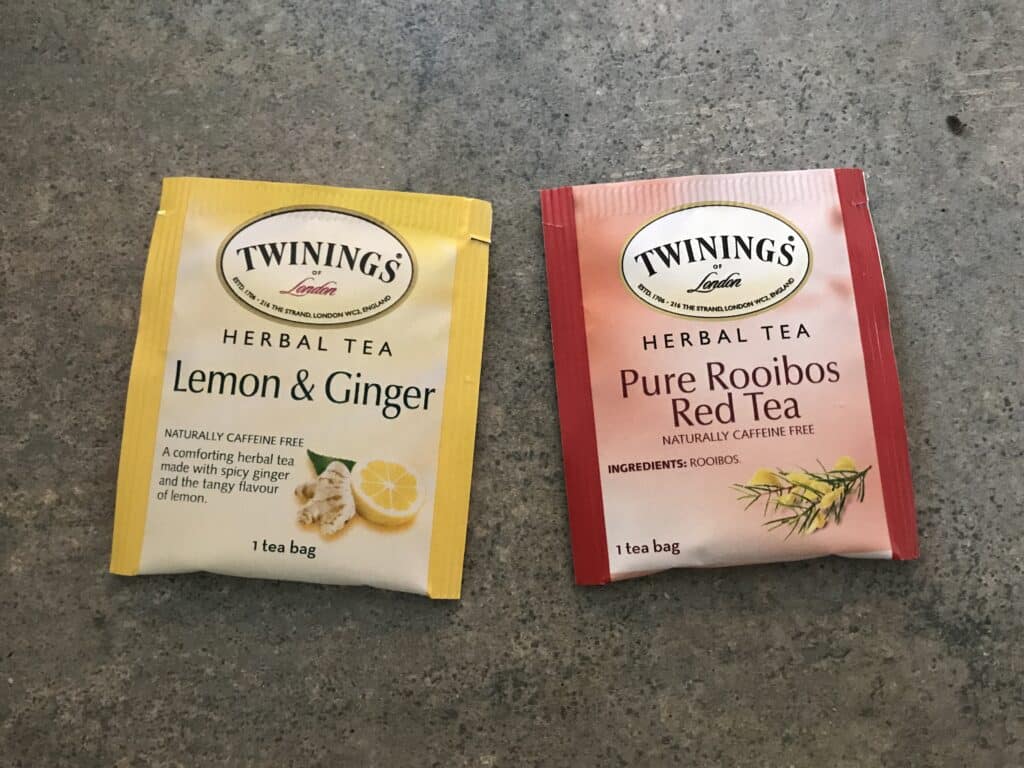
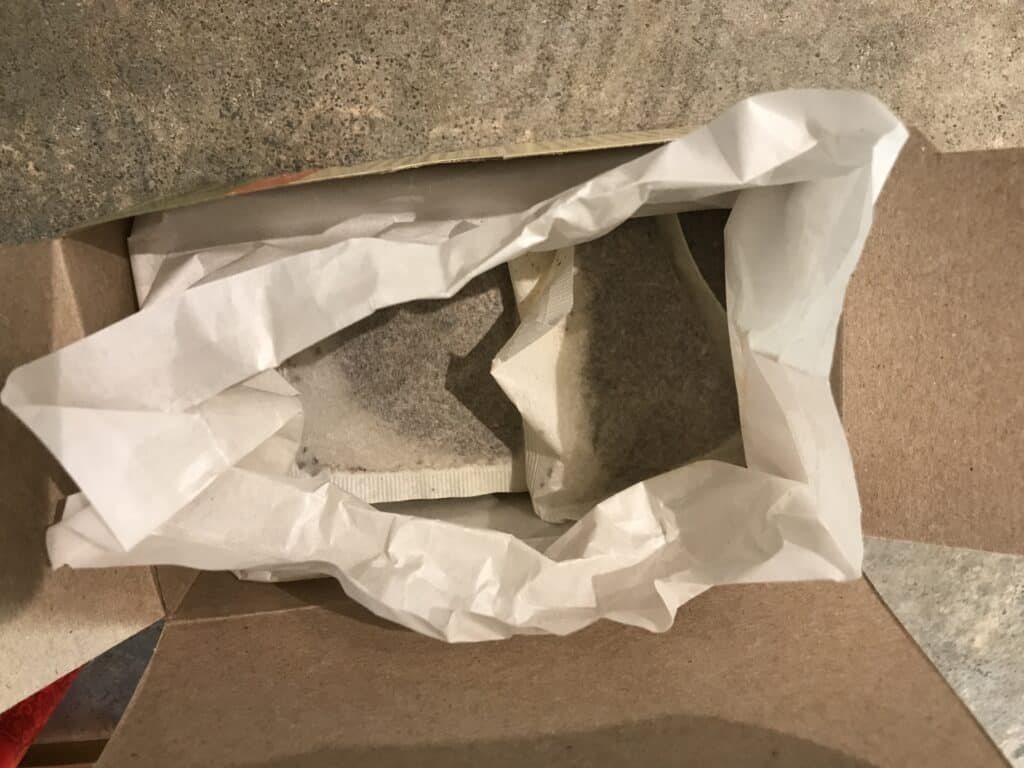
In reality, the best loose leaf tea comes in airtight containers made with steel or aluminum that can be easily reused and recycled. These tins help to keep the tea fresh by reducing opportunities for oxidation and exposure to moisture.
With herbs that are cut and dried, moisture, air, and light all impact tea quality, taste, and medicinal benefits. As such, moisture barriers that limit oxidation are a good idea for herbal tea bags otherwise packaged in paper or cardboard.
The good news is that at least one tea company, Traditional Medicinals, has gone to the trouble of developing a BPI-certified wrapper made from certified industrial compostable materials. This wrapper comprises a very thin metalized barrier of food-grade aluminum, surrounded by biobased plastic that is biodegradable, plus paper.
The wrapper is BPI-certified and fully compostable in industrial composting, where the aluminum oxidizes into aluminum oxide (found in nature) when the bag decomposes. No aluminum is ever in contact with the tea bag or tea itself.
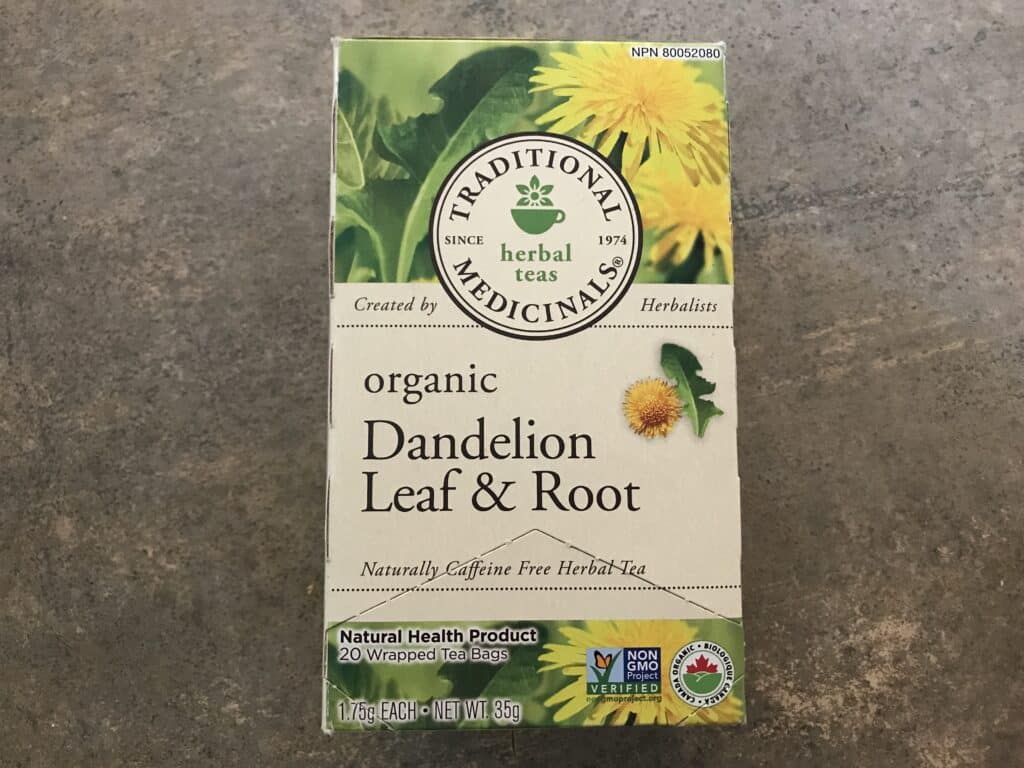
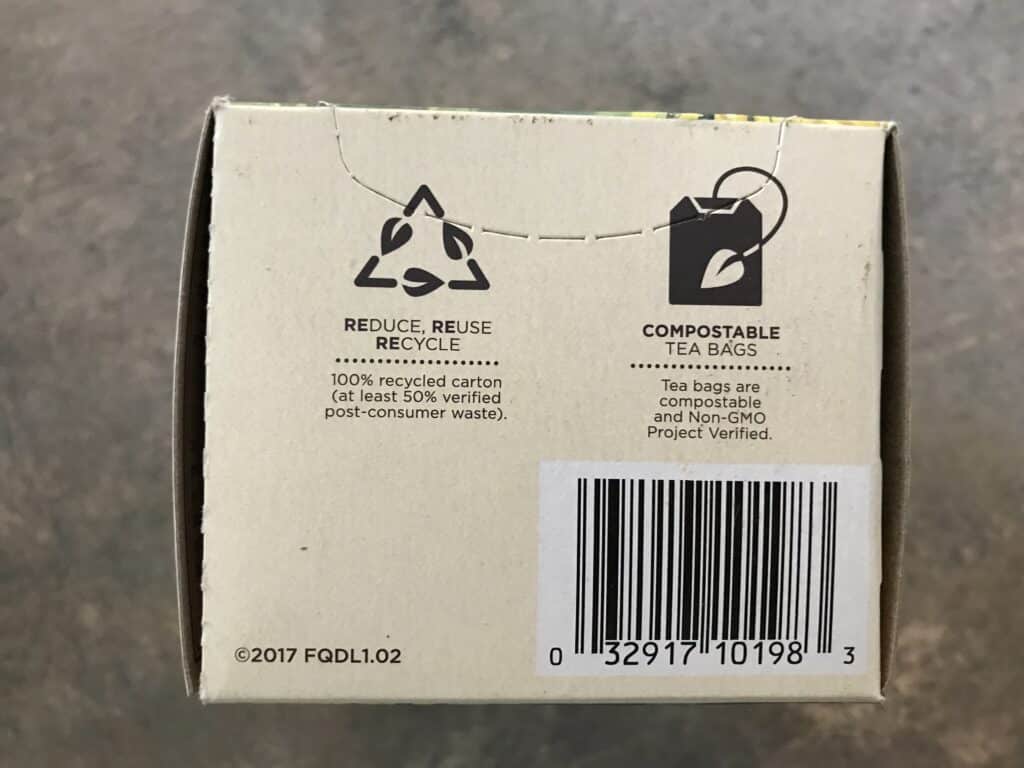
Why choose loose leaf tea?
It can be very difficult to tell which tea bags contain plastic and which are plastic-free.
Don’t let that stand in the way of enjoying a good cuppa, though.
For worry-free tea, embrace loose leaf brewing.
Loose leaf tea has many advantages over tea bags.
Advantages of loose leaf tea
Choosing loose leaf tea over tea bags means:
- Less packaging
- Less energy consumption (from tea bag manufacturing)
- Less waste
- Less confusion over what is and isn’t compostable
- Simple composting
- No phthalates in your tea
- No microplastics in your tea
- No epichlorohydrin in your tea
- Easier measuring – choose only the amount of tea you actually need
- Blending possibilities – mix tea to make your own perfect cuppa
- Better quality tea.
Loose leaf tea is typically higher quality than tea in tea bags. This is because most tea bags contain lower-grade tea leaf dust or fannings to help fill out the bags and allow for water to circulate. The necessity of fannings affects the taste, though. Loose leaf tea doesn’t present this problem, meaning a better flavor profile.
Downsides to loose leaf tea
There are a few downsides to loose leaf tea, though. For one, it isn’t quite as convenient as popping a tea bag in a mug. This can be an advantage, though, as it can help you slow down and find a moment or two of stillness and mindfulness in your day.
One other disadvantage is that your tea can start to spoil or lose medicinal properties if you buy it in bulk and take a while to use it up. For herbal teas, it’s best to buy in smaller amounts and store it in airtight containers away from heat, light, and moisture.
To keep costs low (and packaging to a minimum), consider buying your favorite teas in bulk with friends and family. Portion the tea out into jars or tins, so it’s more likely to be used while it’s fresh.
Final thoughts on loose leaf tea
Overall, loose leaf tea is far more sustainable, eco-friendly, and safer than tea bags. Even if those tea bags are plastic-free. And the added bonus? You can become an expert at reading tea leaves.
Clearly I have a lot to say about tea. Big surprise!
For more tea info, check out:
- The best lead-free organic teas
- The best plastic-free tea bags
You might also want to consider brewing tea with an energy efficient French press.
Not a tea drinker? We’ve got coffee lovers covered too: